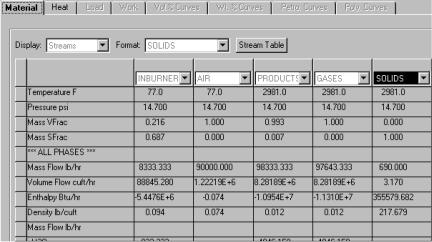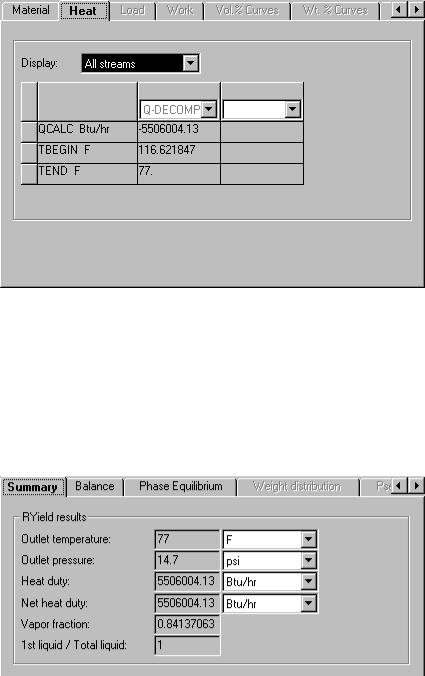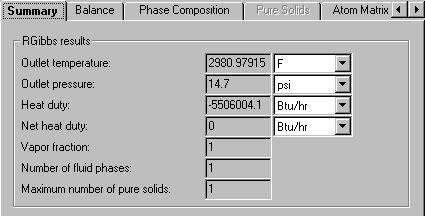
- •Contents
- •About Getting Started Modeling Processes with Solids
- •Why Use Solids Simulation?
- •Sessions in this Book
- •Using Backup Files
- •Related Documentation
- •Installation Manual
- •User Guide
- •Technical Support
- •World Wide Web
- •Hours
- •Modeling Coal Drying
- •Coal Drying Flowsheet
- •Drawing the Graphical Simulation Flowsheet
- •Stream Classes and Substreams
- •Specifying Components
- •Defining Properties
- •For More Information on the HCOALGEN Model
- •Entering Stream Data
- •Specifying Blocks
- •Using a Calculator Block to Control Drying
- •Running the Simulation
- •Examining Simulation Results
- •Exiting Aspen Plus
- •Modeling Coal Combustion
- •Coal Combustion Flowsheet
- •Starting Aspen Plus
- •Opening an Existing Run
- •If Your Saved File Solid1.apw is Not Displayed
- •Saving a Run Under a New Name
- •Drawing the Graphical Simulation Flowsheet
- •Changing the Stream Class
- •Adding Components to the Model
- •Defining Properties
- •Change the Heat of Combustion Method for Coal
- •Specify the Heat of Combustion for Coal
- •Specifying the Air Stream
- •Specifying Unit Operation Models
- •Specify the Splits for the SSplit Block
- •Defining a Calculator Block
- •Specify the Calculations to be Performed
- •Specify When the Calculator Block Should be Run
- •Running the Simulation
- •Examining Results
- •Exiting Aspen Plus
- •Modeling Gas-Solid Separators
- •Gas-Solid Separation Flowsheet
- •Starting Aspen Plus
- •Opening an Existing Run
- •If Your Saved File Solid2.apw is Not Displayed
- •Saving a Run Under a New Name
- •Drawing the Graphical Simulation Flowsheet
- •To Update the Title for This Simulation
- •Running the Simulation
- •Examining Results
- •Exiting Aspen Plus
- •Modeling Polymer Recovery
- •Polymer Recovery Flowsheet
- •Starting Aspen Plus
- •To Specify the Application Type and Run Type for the New Run
- •Drawing the Graphical Simulation Flowsheet
- •Specifying Components
- •Defining Properties
- •Defining Stream Conditions
- •Entering Block Specifications
- •Enter Specifications for the CCD Model
- •To Learn More about the Cyclone Model Using Help
- •Enter Specifications for the Cyclone Model
- •To Specify That the Mixer Block DRIER Operates at 15 psi
- •Enter Specifications for the HyCyc Model
- •Running the Simulation
- •Examining Results
- •Exiting Aspen Plus
- •Connecting to the Aspen Plus Simulation Engine

View the Stream
Results
Examining Results
1From the toolbar, click  .
.
The Results Summary | Run Status | Summary sheet appears, indicating that the simulation completed normally.
2Click  to access the next results sheet.
to access the next results sheet.
The Results Summary | Streams | Material sheet appears.
3Review the results on this sheet. Use the horizontal scrollbar to review results that are off the screen.
4In the Display field, click  and select Streams.
and select Streams.
5At the top of each column, and click  and select
and select
INBURNER, AIR, PRODUCTS, GASES, and SOLIDS. Results are filled in for each stream as it is specified.
6Review the results on this sheet. Use the scrollbars to review results that are off the screen.
Stream PRODUCTS is the outlet of the RGibbs equilibrium reactor that models the combustion process. Since oxygen appears in stream PRODUCTS, the combustion process has excess air. An examination of stream PRODUCTS enables you to determine the most stable products for each atom in the combustion process:
•SO2 is favored over SO3 and S.
•N2 is favored over NO and NO2.
•CO2 is favored over CO and C (solid).
•HCL is favored over CL2.
7Click  to access the next results sheet.
to access the next results sheet.
3-20 • Modeling Coal Combustion |
Getting Started - Solids |

The Results Summary | Streams | Heat sheet appears.
This sheet is displays the results for heat streams. Examine the results for Q-DECOMP. The heating value of Q-DECOMP represents the enthalpy change in breaking down the coal in stream DRY-COAL into its constituent elements.
|
8 |
Close the Data Browser window. |
View the Block |
You do not need to view the results for Blocks DRY-REAC and |
|
Results |
DRY-FLSH, since they are unchanged from Simulation 1. View |
|
|
the results for blocks DECOMP, BURN, and SEPARATE. |
|
|
9 |
In the Process Flowsheet window, select the DECOMP block. |
|
10 |
Right-click DECOMP and select Results from the menu. |
|
|
The DECOMP | Results | Summary sheet appears. This sheet |
|
|
reports the outlet thermodynamic conditions for the block. |
Getting Started - Solids |
Modeling Coal Combustion • 3-21 |

11Click  to access the next results sheet.
to access the next results sheet.
The DECOMP | Results | Balance sheet appears. Use this sheet to report the mass and energy balance for the block. Because RYield has a net reaction from nonconventional components to conventional components, the mass balance for both conventional components and nonconventional components is out of balance. However, the total mass balance is in balance.
12Click  to access the next results sheet.
to access the next results sheet.
The DECOMP | Results | Phase Equilibrium sheet appears. This sheet indicates that the liquid from the RYield block is a solution of water and sulfur. In actuality, the sulfur would form a solid at this temperature. However, this fact does not matter for this simulation, because the stream (coal broken down into its constituents) does not exist in a real combustion process. This stream exists only as a mathematical construct to simplify the specification of the combustion process.
13In the Data Browser menu tree, expand the list of forms for the BURN block and select Results.
The BURN | Results | Summary sheet appears. This sheet reports the outlet thermodynamic conditions of the RGibbs block. The outlet temperature is the adiabatic flame temperature of the coal with a fixed amount of excess air.
14Click  to access the next results sheet. The BURN | Results | Balance sheet appears.
to access the next results sheet. The BURN | Results | Balance sheet appears.
15Click  to access the next results sheet.
to access the next results sheet.
The BURN | Results | Phase Composition sheet appears.
3-22 • Modeling Coal Combustion |
Getting Started - Solids |
